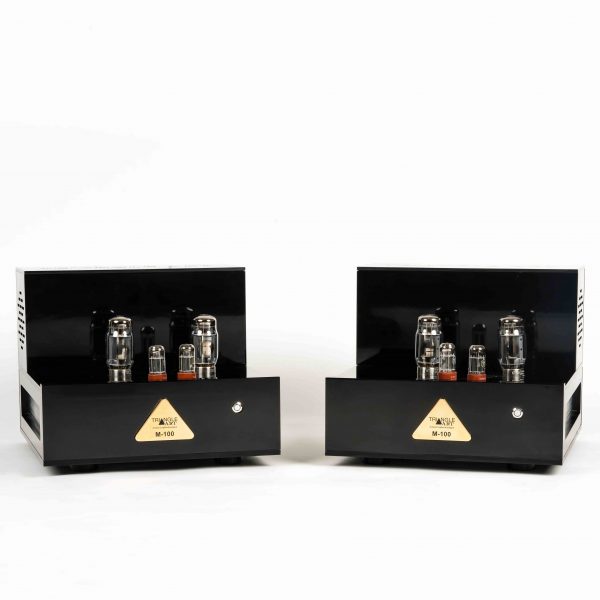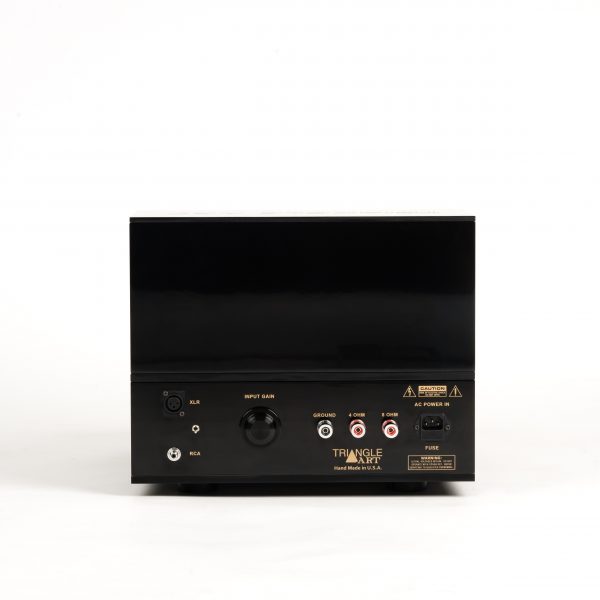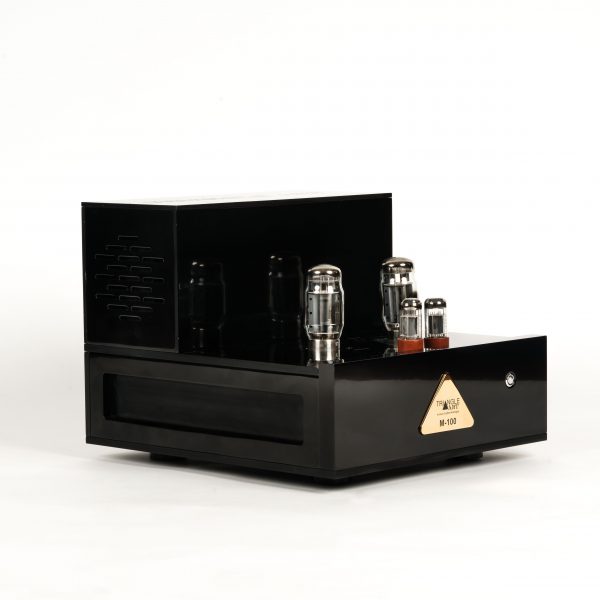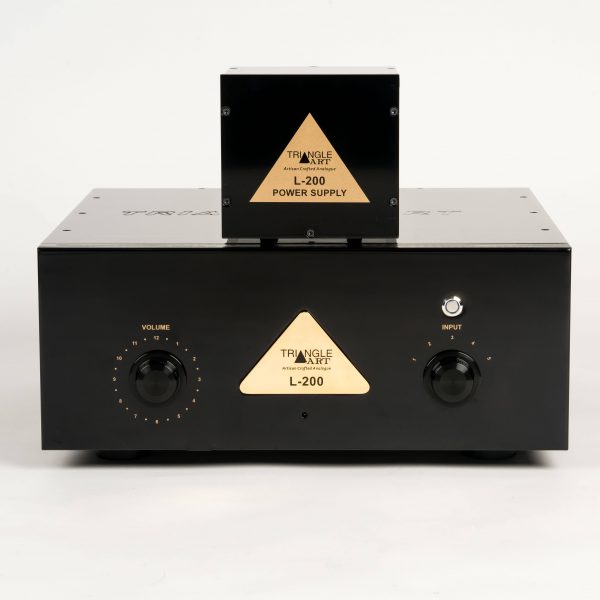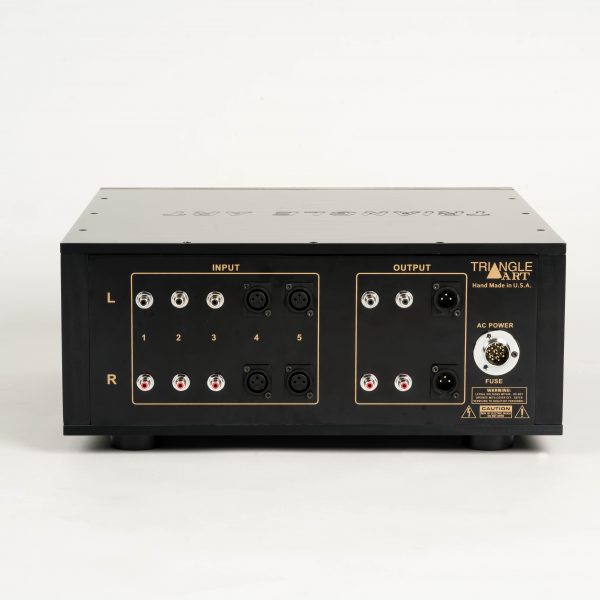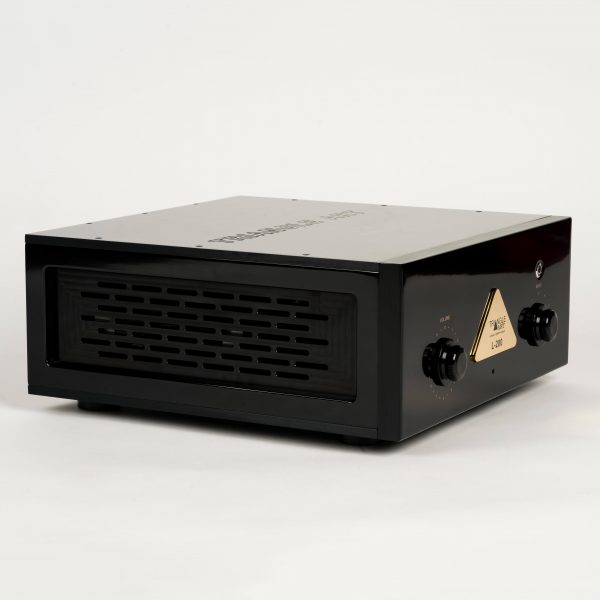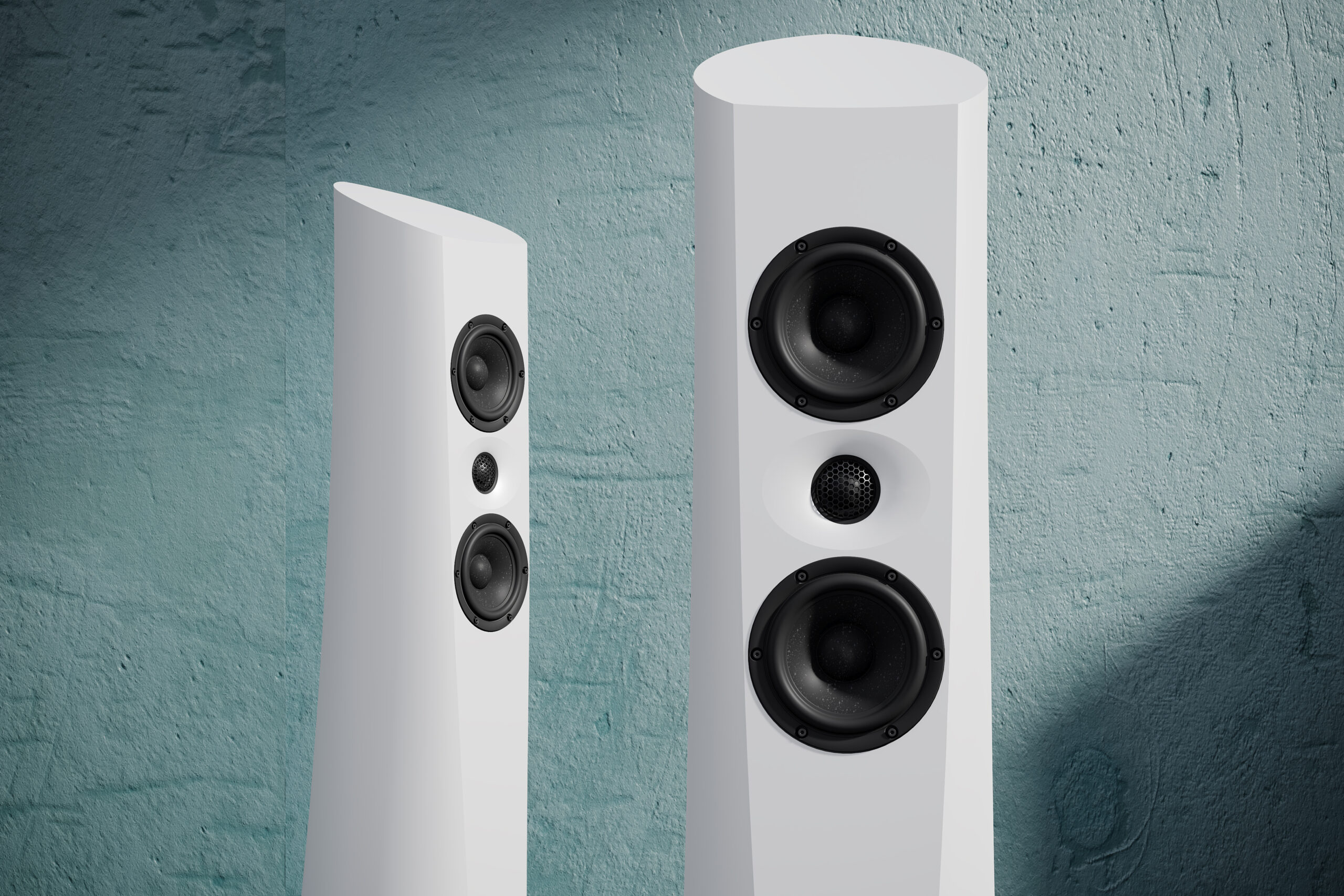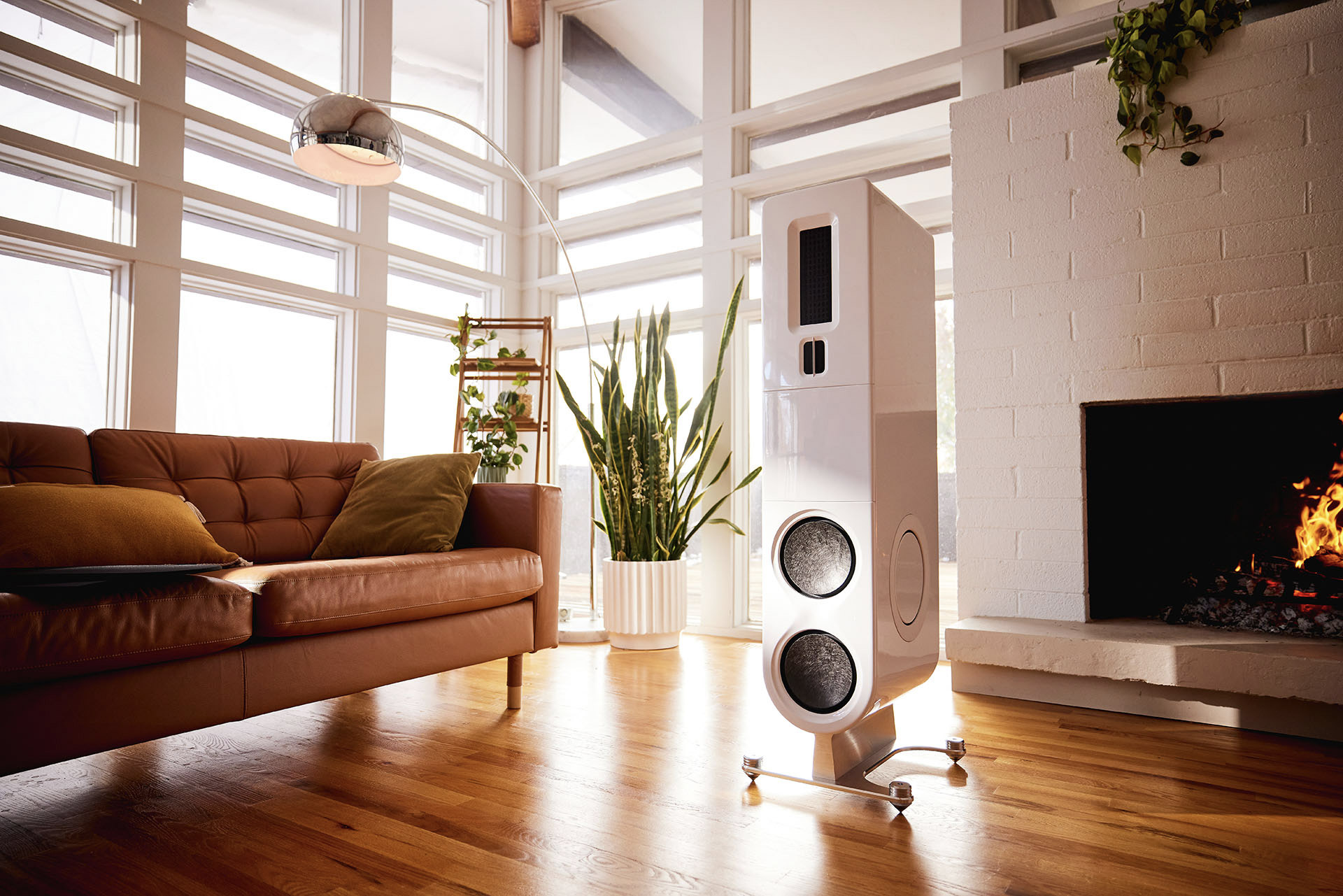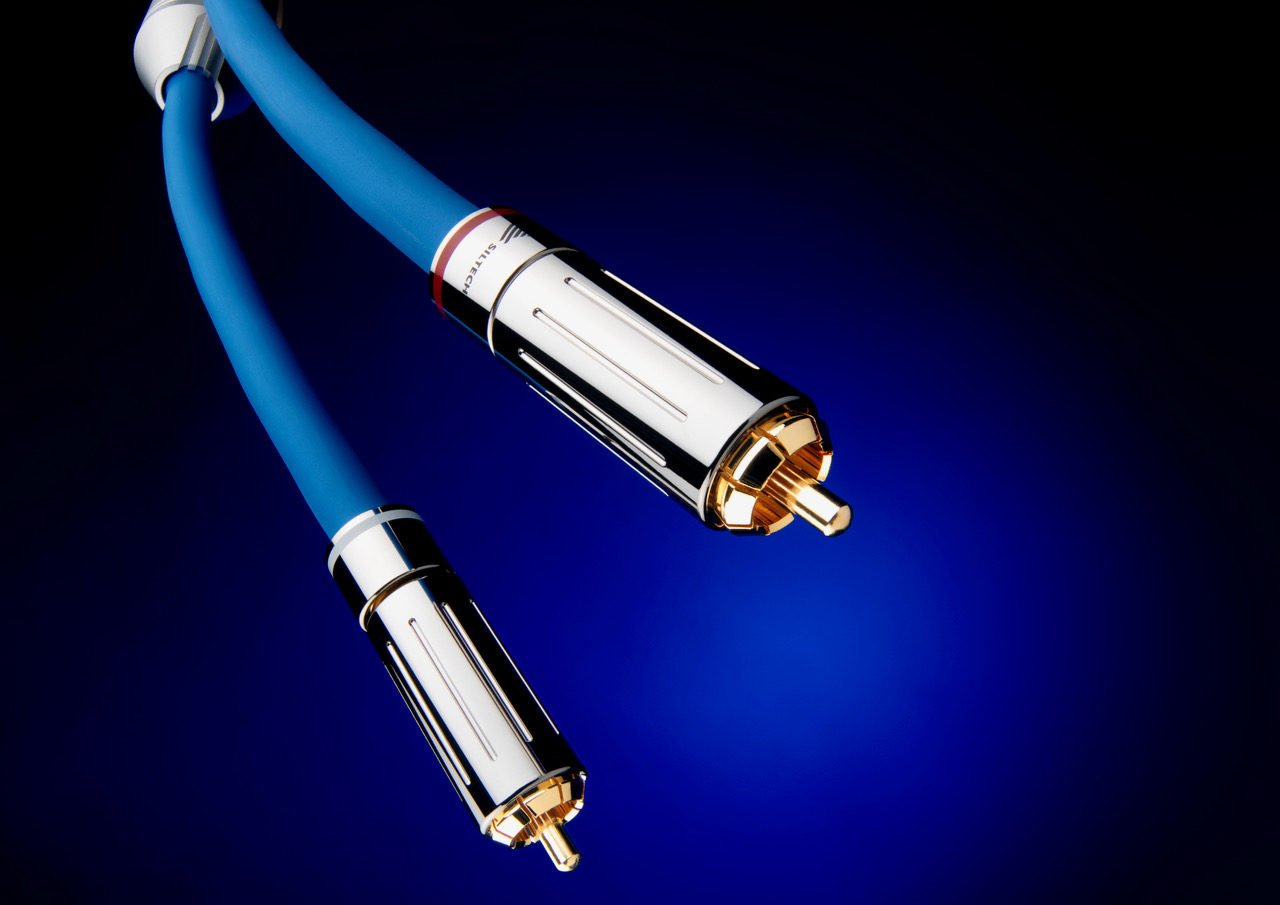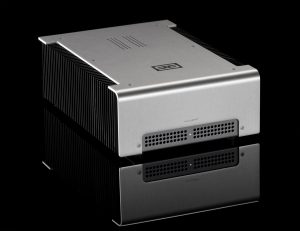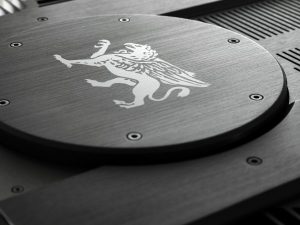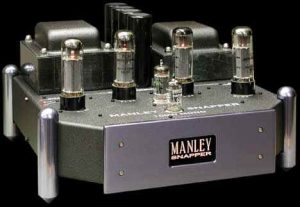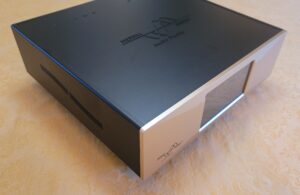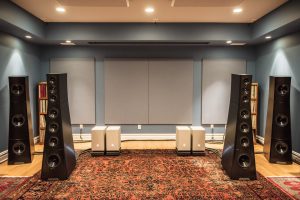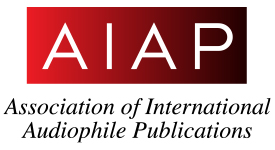I first came across Triangle Art around 7 years ago while scrolling through a familiar webzine. It was fortuitous as I was getting back into vinyl after abandoning it decades ago, leaving behind my thoroughly thrashed Garrard that carried me valiantly through my childhood and teens.
What caught my eye in that webzine's ad was the massive, gleaming Triangle Art Signature Turntable. I'll admit aesthetics are very important to me and I do tend to lean in the direction of bling. I'm hardly alone in that way but I might be a bit more influenced with a pretty face than the average audiophile. This design really spoke to me. In addition to its attention grabbing façade, I have gleaned that mass is a very good way to go when designing a table. And boy is the Signature massive. After a pleasant and informative conversation with Tom Vu, the man behind the brand, I took the plunge.
Vu recently introduced the M-100 monoblocks and the L-200 preamplifier replacing his previous efforts. I kept an eye on on Vu's electronics via show reports, but hadn't seen much about them in the press. My commitment to solid-state kept me several car lengths behind these tubed products without losing sight of them completely. Vu and I traded texts for a good year before the time was right for both us. As it would happen, I have been in a fidgety mood for something a little different hoping to shake things up a bit. And shaking things up is exactly what happened.
The M-100 employs 2-KT1200s and 2-6N7 tubes. Output power is 120 watts per side with both 4 and 8 ohm taps. There are one set balanced and single ended inputs. In the process of unpacking the M-100s, I was pretty shocked at how heavy, solid, and downright massive they are. The glossy black finish and gold badges look smart without being over the top. There are no tube cages so caution is required. The soft-touch power button glows blue when engaged. Biasing the tubes is required upon the first power up and the instructions to do so are well explained in the owner's manual. There is a voltage meter included which is a nice touch. There is a 64 step, top of the line Elma potentiometer equipped volume control knob on the back of the amplifiers to adjust channel imbalance, if needed. This also allows you to bypass your preamplifier and run your source directly into the M-100. This is a very cool option and while the sound did not change dramatically when eliminating the L-200 preamplifier, it sure did sound fantastic. The sense of being directly connected to the music was heightened and if you can due without a preamplifier, ultimately this is the way to go. The one caveat with both preamplifier and volume control on the amplifiers is the jumps in volume between each step is bit greater than most other preamplifiers volume controls. Hardly a deal breaker, but I did take notice.
When lifted out of its crate the L-200 preamplifier provided an even bigger surprise than the heft of the amplifiers. I mean, how often does one come across a 90lb single chassis preamplifier? Its broad and deep stature will not get lost in your cluttered rack of gear that's for sure.
For simplicity the L-200 utilizes only the 1-6SN7 tube. Vu maintains a fair amount of discretion regarding his designs so there is not much I can add.
Based on build quality I have no qualms with the asking prices-$30K for the amplifiers and $20K for the preamplifier. The preamplifier utilizes the same top of the line Elma 64-step potentiometer as the amplifiers. There are 5 inputs; 4 single-ended, 1 XLR, and one set of each for outputs.
In addition to the L-200 and M-100 is the Triangle Art Signature TT with its partnering Osirus 2 tone arm and Zeus MC cartridge. I also used the VPI Avenger Reference armed with the Ortofon Ti Anniversary MC cartridge all feeding the great Boulder 1108 phono stage (Vu's tubed phono stage is on its way for a follow up). Wire shared triple duty between the Cardas Clear Beyond, Siltech Anniversary 800 series, and Silversmith Fidelius. Loudspeakers were the Sunny Cable Majestic 15.
For decades my sensibility has been deeply rooted in the solid state camp. I've been very lucky to have owned and reviewed so many great amplifiers from not only big name manufacturers but many lesser known, though no less deserving amplifiers. What I heard upon first listen to the Triangle Art lineup was something quite different from anything I have heard in my system. It very much reminded me of my journey to find the perfect guitar preamplifier/head. After years of chasing tone through more affordable solid-state products, I hit on the Friedman BE-50 tube head. There was no going back. The bloom, tone, and dynamics through the clean channel was phenomenal. The overdrive, heavenly. So it's really no surprise, I guess, that the all tube Triangle Art would scratch an itch in another area of deep passion.
If I had to cast some broad observations of the Triangle Art duo, it would be phenomenal resolution, bloom, space, liveliness, and wonderfully true tonal color and texture. I've been listening to Red Garland Bright and Breezy since I was 5 years old, 52 years in total. What the Triangle Art duo reveals, among other things, on this recording to a great extent is the utterly realistic mechanics of the piano. Notes don't just happen, the sound and feel of the hammers hitting the strings reveal the percussive nature of the instrument. This may sound like a small thing, after all, we listen to music, not necessarily hammers hitting strings. But when it's revealed, and incorporated so realistically, it truly deepens the listening involvement. Same goes for the drums and bass. With the drums, struck cymbals and snare come to life with "real time" excitement. Even within densely populated recordings like Duke Ellington Mood Indigo, the many instruments become more individually rendered and operating within their own bubble of space.
Next up is timbre. This is very much a moving target as different components get it right to varying degrees. Here I will say that these tubed components get it as right as rain.
On Mood Indigo, there is a closely mic'd clarinet that presents a true torture test for every component that has taken it on. It usually ends up being too bright, washing away the texture in a slight hardening blur. After 25 years I have written this off as being the recordings flaw. With the Triangle Art, I was proven mostly wrong. I now get the believable tone and texture of one of the hardest instruments to get right in HiFi. A woody resonance, a column of air escaping the bell, the action of the valves. This was a great surprise and kept me in wrapped attention. Even vocals on rock recordings benefit greatly like Jon Anderson of Yes on Fragile. The triple panning and tracking of his vocals become very interesting and involving. The distinct nature of his voice within the studio production comes into focus. I can't overstate this quality. The M-100 and L-200 are the ticket to unlocking all these hidden treasures we audio nuts chase like a dragon.
Dynamics are very involving though with a different emphasis than the with solid-state amplifiers I have had. On Bright and Breezy, Red Garland's playing utilizes the dynamic scale to present his phrasing much in the way a great vocalist would. From the very quiet to the growing emphasis, to the occasional forte and much in between, his touch is absolutely riveting. I have never really thought of these songs as a piano's interpretation of a vocalist's styling. Until now. Even among slow tempos and fairly simple arrangements, the Triangle Art duo is truly masterful at revealing the subtlest rise and fall of dynamics revealing the life, touch and intent of Mr. Garland. The clarity of the fundamentals and harmonics are secured in a distortion free excitement of air. There is simply less getting in the way of the music. Imagine your favorite vocalist and the control over their phrasing. That's what you get with the Triangle Art to a very believable degree.
My father was an outstanding Jazz pianist. For decades he played in the Chicago Playboy Club's band on the weekends and was Hugh Hefner's private pianist at Heff's Chicago mansion. His favorite saying, one that he drove home 10,000 times—"It don't mean a thing if it don't have that swing!" Here again the Triangle Art handles things a bit differently than the big brute solid-state gear I've had. At first I was a little let down by the inability of 120-watt tubed M-100 to use the brute force on the bottom end to forcefully push the tempo forward. I was a bit prepared for this knowing what I know about the nature of tubes. My big Sunny Cable Majestic 15s trying to lock into my enormous loft with 14ft. ceilings and the 33 x 60' listening room's dimensions with 120-watts of tubed power could not equal the 600-watt Karan Acoustics amp I recently reviewed or even my 200-watt Boulder 806 integrated. With that long winded caveat out of the way, there is some good news. While the lower octave dynamics were not the most visceral in my taxing system and environment, they make up for it with a riveting over all swing thanks to the phenomenal transient response and seamless dynamic scale from top to bottom. The sense of propulsive, forward momentum is very engaging. Yes my body did move and my foot did tap, as the music swings with ease.
What wraps its arms around all this great sound is a rendering of air and atmosphere that really reinforces the undeniable impact of the Triangle Art duo. I have heard these qualities from some of the better solid-state gear I have lived with though not this extant. The Triangle Art M-100 and L-200 abilities take it that much further down the road.
Conclusion
Under the best circumstances a review, for me at least, will result in widening perspectives and expanding my knowledge regarding what is possible in high-end audio. Keep in mind, this system is designed as purist in form for the purist at heart. There are no creature comforts such as remote volume adjustment or input switching. As my current set up must accommodate my family's entertainment center, the lack of remote and the temperament of tubes makes this an affair of whimsy and abandon rather than a long term committed relationship. But make no mistake, the Triangle Art M-100 amplifiers and L-200 preamplifier recreates music with verve and life adding up too an intensely musical experience.
One day when I will have a dedicated room/system. And when that time comes I would gladly give up the creature comforts in the name of such seductive, engaging musical purity.
M-100 Amplifiers
Retail: $23,000 a pair
L-200 Preamplifier
Retail: $20,000
TriangleArt




